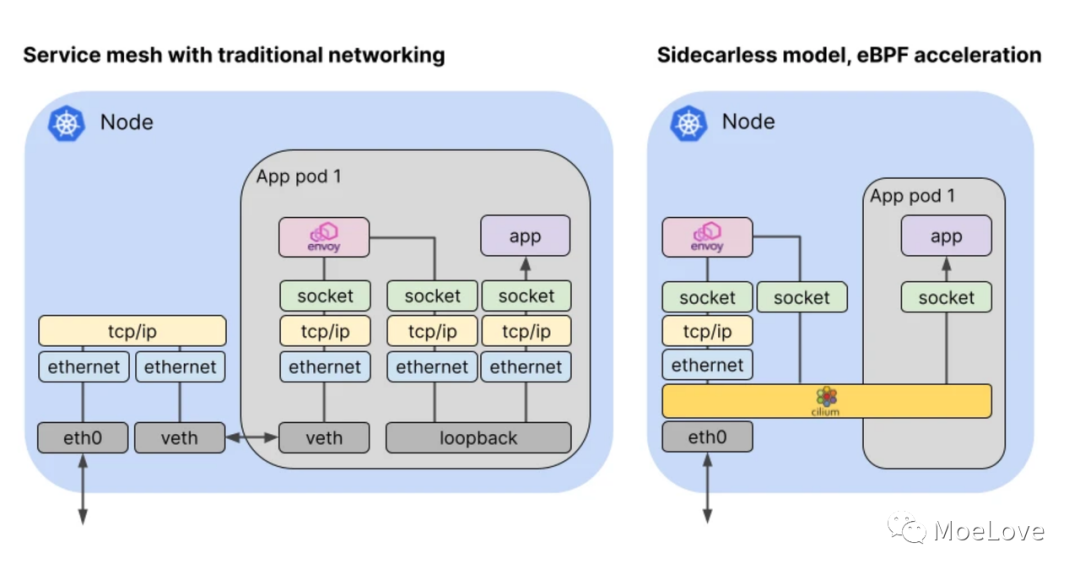你好,我是猿java。
在业务开发中,判断相等的逻辑是很常见的,因为在java语言中有原生数据类型,包装类,引用等,如果判等使用不当,小则出现Bug,未能达到真实判等作用,重则可能会引起内存泄露等问题。
所以今天我们就来聊聊java中的判等的问题,看看你的日常开发中踩过几个坑。
判等操作 {#判等操作}
在java中常见的的判等操作有:equal、compareTo 和 ==。
温馨提示:单个 = 在java中是赋值的含义,不是数学中的等于号哦
数据类型 {#数据类型}
-
原生数据类型,8个
|-------------------------|-----------------------------------------------------------------------------------------------------------------------------------------------------------------------------------------------------------------------------| |
1 2 3 4 5 6 7 8|1)byte: 字节,1个字节,8位,-128~127 2)short:短整型,2个字节,16位 3)int: 整型,4个字节,32位 4)long: 长整型,8个字节,64位 5)float:单精度小数,例如:5.2 6)double:双精度浮点型 7)char: 单个的字符,例如字母a,或者中文张,char ch = 'a'; char b = '张'; 8)boolean: 布尔类型,只有true和false| -
包装数据类型,8个
|-------------------------|-----------------------------------------------------------------------| |
1 2 3 4 5 6 7 8|1)Byte 2)Short 3)Int 4)Long 5)Float 6)Double 7)Char 8)Boolean| -
引用类型
|-----------|--------------------------------------------------------------------------| |
1|People people = new People(); people就为一个引用类型,指向new People()这个对象|
equals、compareTo、 == 的使用和分析 {#equals、compareTo、-的使用和分析}
我们先看几个使用例子,然后对照结果来讲解区别
|------------------------------------------------------------------|-------------------------------------------------------------------------------------------------------------------------------------------------------------------------------------------------------------------------------------------------------------------------------------------------------------------------------------------------------------------------------------------------------------------------------------------------------------------------------------------------------------|
| 1 2 3 4 5 6 7 8 9 10 11 12 13 14 15 16 17 18 19 20 21 22 | int a = 10; a == 10; true long b = 1000L; b == 1000L; true Object obj1 = new Object(); Object obj2 = new Object(); obj1 == obj2; // false obj1.equals(obj2); // false Integer integer1 = new Integer(1); Integer integer2 = new Integer(1); Integer integer3 = new Integer(200); Integer integer4 = new Integer(200); integer1 == integer2; // true integer3 == integer4; // false integer1.equals(integer2); //false String a = new String("1"); String b = new String("1"); a.equals(b); // true |
为什么integer1 == integer2; 为true,而integer3 == integer4; 为false?
这是因为对于Integer类型,当值在-128~127时,存在一个缓存的概念,源码如下:java.lang.Integer.valueOf(java.lang.String, int),同理,Long,Double也是一样,有兴趣的可以去看看源码。
|---------------------------|-----------------------------------------------------------------------------------------------------------------------------------------------------------------------------------------------------------------------------------------------------------------------------------------------------------|
| 1 2 3 4 5 6 7 8 9 | public final class Integer extends Number implements Comparable<Integer> { // low = -128 high = 127,使用的是缓存数据 public static Integer valueOf(int i) { if (i >= IntegerCache.low && i <= IntegerCache.high) return IntegerCache.cache[i + (-IntegerCache.low)]; // 使用了对象 return new Integer(i); } } |
为什么obj1 == obj2; 为false,而integer1 == integer2; 和 a.equals(b); 都为true
这是因为Object的equals是比地址,而Integer等包装数据类型和String重写了equlas方法,源码如下:
|------------------------------------------------------------------------------|-----------------------------------------------------------------------------------------------------------------------------------------------------------------------------------------------------------------------------------------------------------------------------------------------------------------------------------------------------------------------------------------------------------------------------------------------------------------------------------------------------------|
| 1 2 3 4 5 6 7 8 9 10 11 12 13 14 15 16 17 18 19 20 21 22 23 24 25 26 | public class Object{ public boolean equals(Object obj) { return (this == obj); } } public class Integer{ public boolean equals(Object obj) { if (obj instanceof Integer) { return value == ((Integer)obj).intValue(); } return false; } } public class String{ public boolean equals(Object anObject) { if (this == anObject) { return true; } return (anObject instanceof String aString) && (!COMPACT_STRINGS || this.coder == aString.coder) && StringLatin1.equals(value, aString.value); } } |
对于String类型这种特殊的类型,我们做更多的分析,首先看几个String使用的案例:
|---------------------------------------------------------------------------|-------------------------------------------------------------------------------------------------------------------------------------------------------------------------------------------------------------------------------------------------------------------------------------------------------------------------------------------------------------------------------------------------------|
| 1 2 3 4 5 6 7 8 9 10 11 12 13 14 15 16 17 18 19 20 21 22 23 24 25 | // 案例1 String a = "1"; String b = "1"; a == b; //true // 案例2 String a = "1"; String b = new String("1"); a == b; // false // 案例3 String a = new String("2"); String b = new String("2"); a == b; //false // 案例4 String a = new String("3").intern(); String b = new String("3").intern(); a == b; // false // 案例5 String a = new String("2"); String b = new String("2"); a.equals(b); //true |
对于String这种类型,为了节省内存,设计了字符串常量池机制。对于双引号的String,JVM会先对这个字符串进行检查,如果字符串常量池中存在相同内容的字符串对象的引用,则将这个引用返回;否则,创建新的字符串对象,然后将这个引用放入字符串常量池,并返回该引用。这种机制,就是字符串驻留或池化。
对于引用类型,比较的是引用指向的内存地址是否一致,也就是比较它们是不是同一个对象。
案例1,a,b 都能在字符串常量池中找到,所以 a == b 为true;
案例2,a指向字符串常量池,b指向堆栈,所以 a == b 为false;
案例3,new 出来的两个String是不同对象,引用当然不同,所以 a == b 为false;
案例4,使用 String 提供的 intern 方法也会走常量池机制,所以 a == b 为true;
java.lang.String.intern()源码
|---------------------------------------------------------------------------|---------------------------------------------------------------------------------------------------------------------------------------------------------------------------------------------------------------------------------------------------------------------------------------------------------------------------------------------------------------------------------------------------------------------------------------------------------------------------------------------------------------------------------------------------------------------------------------------------------------------------------------------------------------------------------------------------------------------------------------------------------------------------------------------------------------------------------------------------------------------------------------------------------------------------------------------------------------------------------------------------------------------------------------------------------------------------------------------------------------|
| 1 2 3 4 5 6 7 8 9 10 11 12 13 14 15 16 17 18 19 20 21 22 23 24 25 | /** * Returns a canonical representation for the string object. * <p> * A pool of strings, initially empty, is maintained privately by the * class {@code String}. * <p> * When the intern method is invoked, if the pool already contains a * string equal to this {@code String} object as determined by * the {@link #equals(Object)} method, then the string from the pool is * returned. Otherwise, this {@code String} object is added to the * pool and a reference to this {@code String} object is returned. * <p> * It follows that for any two strings {@code s} and {@code t}, * {@code s.intern() == t.intern()} is {@code true} * if and only if {@code s.equals(t)} is {@code true}. * <p> * All literal strings and string-valued constant expressions are * interned. String literals are defined in section 3.10.5 of the * <cite>The Java™ Language Specification</cite>. * * @return a string that has the same contents as this string, but is * guaranteed to be from a pool of unique strings. * @jls 3.10.5 String Literals */ public native String intern(); |
通过上面的源码注释可以知道intern()可以使字符串驻留的在常量池中,而字符串常量池是一个固定容量的Map,如果业务代码中使用了intern()方法,可能会导致性能问题。
案例5,equals是对值内容判等,所以 a == b 为true;
compareTo比较 {#compareTo比较}
将此对象与指定对象进行比较以进行排序。 返回一个负整数表示小于指定对象、零表示等于指定对象或正整数表示大于指定对象。源码如下:
|---------------------------------------------------------------------------------------------------------------------------------|-----------------------------------------------------------------------------------------------------------------------------------------------------------------------------------------------------------------------------------------------------------------------------------------------------------------------------------------------------------------------------------------------------------------------------------------------------------------------------------------------------------------------------------------------------------------------------------------------------------------------------------------------------------------------------------------------------------------------------------------------------------------------------------------------------------------------------------------------------------------------------------------------------------------------------------------------------------------------------------------------------------------------------------------------------------------------------------------------------------------------------------------------------------------------------------------------------------------------------------------------------------------------------------------------------------------------------------------------------------------------------------------------------------------------------------------------------------------------------------------------------------------------------------------------------------------------------------------------------------------------------------------------------------------------------------------------------------------------------------------------------------------------------------------------------------------------------------------------------------------------------------------------------------------------------------------------------------------------------------------|
| 1 2 3 4 5 6 7 8 9 10 11 12 13 14 15 16 17 18 19 20 21 22 23 24 25 26 27 28 29 30 31 32 33 34 35 36 37 38 39 40 41 42 43 | public interface Comparable<T> { /** * Compares this object with the specified object for order. Returns a * negative integer, zero, or a positive integer as this object is less * than, equal to, or greater than the specified object. * * <p>The implementor must ensure * {@code sgn(x.compareTo(y)) == -sgn(y.compareTo(x))} * for all {@code x} and {@code y}. (This * implies that {@code x.compareTo(y)} must throw an exception iff * {@code y.compareTo(x)} throws an exception.) * * <p>The implementor must also ensure that the relation is transitive: * {@code (x.compareTo(y) > 0 && y.compareTo(z) > 0)} implies * {@code x.compareTo(z) > 0}. * * <p>Finally, the implementor must ensure that {@code x.compareTo(y)==0} * implies that {@code sgn(x.compareTo(z)) == sgn(y.compareTo(z))}, for * all {@code z}. * * <p>It is strongly recommended, but <i>not</i> strictly required that * {@code (x.compareTo(y)==0) == (x.equals(y))}. Generally speaking, any * class that implements the {@code Comparable} interface and violates * this condition should clearly indicate this fact. The recommended * language is "Note: this class has a natural ordering that is * inconsistent with equals." * * <p>In the foregoing description, the notation * {@code sgn(}<i>expression</i>{@code )} designates the mathematical * <i>signum</i> function, which is defined to return one of {@code -1}, * {@code 0}, or {@code 1} according to whether the value of * <i>expression</i> is negative, zero, or positive, respectively. * * @param o the object to be compared. * @return a negative integer, zero, or a positive integer as this object * is less than, equal to, or greater than the specified object. * * @throws NullPointerException if the specified object is null * @throws ClassCastException if the specified object's type prevents it * from being compared to this object. */ public int compareTo(T o); } |
总结 {#总结}
- 基本类型只能使用 ==,针对包装数据类型和 String 在内的引用类型,需要使用equals
- 除包装数据类型和 String 以外的引用类型,== 和 equals都是比地址,如果需要 equal是比值,就需要重写equals方法和hashCode方法
踩坑点 {#踩坑点}
- 对于包装数据类型使用==比值,结果有时候对,有时候错
- 对于String类型,使用了new String("").intern(),导致性能问题
 51工具盒子
51工具盒子





